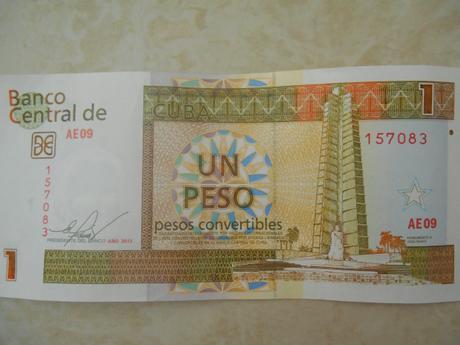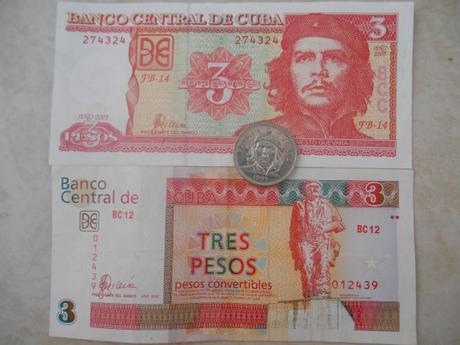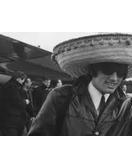

 Share with others. Thanks!
Share with others. Thanks!
Travel in Cuba is extremely enjoyable but can be a bit frustrating, even for the best prepared travellers, and money issues seem to occur for many. Here are some tips and advice from personal experience, and that of other travellers.
Cuban currency can not be bought legally outside Cuba and can not be exchanged after leaving the island. Cuba has two official currencies and both are written using the international $ symbol. The original one is simply called the Cuban Peso or National Peso, with the abbreviation CUP (coop). Most of the locals will only use CUP. 1 CUP = 0.033 Euro. Some local shops (tiendas) and some restaurants only accept CUP.

Cuban Pesos (CUP).
The other currency is the newer Cuban Convertible Peso, the CUC (cook). This was introduced when the Castro government decided to stop using US dollars, but one CUC is valued the same as one US dollar. This is what tourists are mostly using. The exchange varies inside Cuba for one CUC, from 23 to 25 CUP.

One Cuban Convertible Peso (CUC), clearly marked with ‘pesos convertibles’.
Bring some foreign cash! The best currencies are Euro, Canadian dollars, Mexican pesos and Australian dollars, although some others may be accepted too. American dollars are OK but the Cuban government charges an extra 10% fee for changing them.

Jose Marti International Airport, Havana, Cuba.
For those flying into Terminal 3 at Jose Marti International Airport in Havana, the chances are that after clearing baggage claim, immigration, customs and the new baggage X-ray machine, there will be a long, long line of fellow tourists waiting to change their cash into Cuban Convertible Pesos (CUC). As it is almost necessary to take a taxi into the city, you will obviously need CUC to pay your taxi driver. Ask the taxi driver to drive to Terminal 2 where there is usually no line for the ‘Cambio’ desk. You will receive only CUC at the Cambio..
There are domestic banks and ATMs all around Havana, and in most other cities and towns in Cuba. Visa cards are the best, although some Mastercards will work. All ATMs have instructions in Spanish and English. One idea is to get enough CUC at the airport for the first few days, then use ATMs and save some foreign currency for emergencies.
Do not try to take out too many CUC at one time. Often the machine will give up to 150 CUC, on an odd occasion it may be possible to withdraw 200 or even 300 CUC at one time. If in the event that a machine will not allow a withdrawal, or if this happens with several machines, there may be a simple problem with the communication system. It is possible to go into the bank and ask the cashier for cash. It is necessary to have your passport and bank card!

Che Guevara’s image is shown on the 3 CUP note on top; the 3 CUP coin; and his statue is on the 3 CUC note. Che was appointed President of the National Bank in 1960 and his signature appeared on some early notes.
On weekends the banks are closed but many of the top hotels are able to give a cash advance, and some can also change currency. Obviously in smaller towns this is more difficult, so be sure to stock up on cash before leaving Havana.
On leaving the country it is necessary to pay 25 CUC in airport departure tax. This is done after check-in and must be paid in CUC, so keep enough pesos for this to avoid changing other money at the airport. Some tour operators include this tax in overall tour prices so don’t pay twice. Remember that Cuban pesos can not be exchanged after leaving the country.

This is a pricelist, obviously in Spanish, of what Cubans pay for their ‘rations’. Yes they do have to pay.

